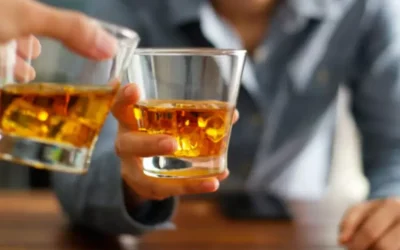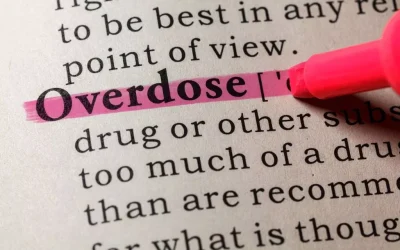Abstinence Violation Effect AVE
- 21/11/2023
- Author : admin
Related work has also stressed the importance of baseline levels of neurocognitive functioning (for example as measured by tasks assessing response inhibition and working memory; [56]) as predicting the likelihood of drug use in response to environmental cues. The study of implicit cognition and neurocognition in models of relapse would likely require integration of distal neurocognitive factors (e.g., baseline performance in cognitive tasks) in the context of treatment outcomes studies or EMA paradigms. Additionally, lab-based studies will be needed to capture dynamic processes involving cognitive/neurocognitive influences on lapse-related phenomena. Knowledge about the role of NA in drinking behavior has benefited from daily process studies in which participants provide regular reports of mood and drinking.

1. Nonabstinence treatment effectiveness
- Ultimately, individuals who are struggling with behavior change often find that making the initial change is not as difficult as maintaining behavior changes over time.
- While some assert that relapse occurs after the first sip of alcohol or use of another drug, certain scientists believe it is a process which more closely resembles a domino effect.
- Rather than being viewed as a state or endpoint signaling treatment failure, relapse is considered a fluctuating process that begins prior to and extends beyond the return to the target behavior [8,24].
- A “controlled drinking controversy” followed, in which the Sobells as well as those who supported them were publicly criticized due to their claims about controlled drinking, and the validity of their research called into question (Blume, 2012; Pendery, Maltzman, & West, 1982).
- In another study examining the behavioral intervention arm of the COMBINE study [128], individuals who received a skills training module focused on coping with craving and urges had significantly better drinking outcomes via decreases in negative mood and craving that occurred after receiving the module.
The relationship between self-efficacy and relapse is possibly bidirectional, meaning that individuals who are more successful report greater self-efficacy and individuals who have lapsed report lower self-efficacy4. Chronic stressors may also overlap between self-efficacy and other areas of intrapersonal determinants, like emotional states, by presenting more adaptational strain on the treatment-seeking client4. While a person may physically abstain from using drugs or alcohol, their thoughts and emotions may have already returned to substance abuse. This model asserts that full-blown relapse is a transitional process based on a combination of factors. As the foregoing review suggests, validation of the reformulated RP model will likely progress slowly at first because researchers are only beginning to evaluate dynamic relapse processes. Currently, the dynamic model can be viewed as a hypothetical, theory-driven framework that awaits empirical evaluation.
1. Review aims
In addition, relaxation training, time management, and having a daily schedule can be used to help clients achieve greater lifestyle balance. Cognitive restructuring can be used to tackle cognitive errors such as the abstinence violation effect. the abstinence violation effect refers to Clients are taught to reframe their perception of lapses, to view them not as failures but as key learning opportunities resulting from an interaction between various relapse determinants, both of which can be modified in the future.
Does 12-Step Contribute to the AVE?

Relapse occurs when this behavior accelerates back into prolonged and compulsive patterns of drug abuse. Despite this, lapsing is still a risk factor and makes a person more prone to relapse. Results of a preliminary nonrandomized trial supported the potential utility of MBRP for reducing substance use. In this study incarcerated individuals were offered the chance to participate in an intensive 10-day course in Vipassana meditation (VM). Those participating in VM were compared to a treatment as usual (TAU) group on measures of post-incarceration substance use and psychosocial functioning.
Perhaps the most notable gap identified by this review is the dearth of research empirically evaluating the effectiveness of nonabstinence approaches for DUD treatment. Given low treatment engagement and high rates of health-related harms among individuals who use drugs, combined with evidence of nonabstinence goals among a substantial portion of treatment-seekers, testing nonabstinence treatment for drug use is a clear next step for the field. Ultimately, nonabstinence treatments may overlap significantly with abstinence-focused treatment models. Harm reduction psychotherapies, for example, incorporate multiple modalities that have been most extensively studied as abstinence-focused SUD treatments (e.g., cognitive-behavioral therapy; mindfulness). However, it is also possible that adaptations will be needed for individuals with nonabstinence goals (e.g., additional support with goal setting and monitoring drug use; ongoing care to support maintenance goals), and currently there is a dearth of research in this area. An additional concern is that the lack of research supporting the efficacy of established interventions for achieving nonabstinence goals presents a barrier to implementation.
Quit-smoking aids not cure-all, expert says – Otago Daily Times
Quit-smoking aids not cure-all, expert says.
Posted: Fri, 11 May 2012 07:00:00 GMT [source]
A great deal of research demonstrates that a pile-up of adverse childhood experiences (ACEs) such as trauma, especially when combined with a chaotic childhood, raises the risk for a number of types of dysfunctional behavior later on, of which addiction is only one. The more ACEs children have, the greater the possibility of poor school performance, unemployment, and high-risk health behaviors including smoking and drug use. Some models of addiction highlight the causative role of early life trauma and emotional pain from it. Some people contend that addiction is actually a misguided attempt to address emotional pain. However, it’s important to recognize that no one gets through life without emotional pain. The power to resist cravings rests on the ability to summon and interpose judgment between a craving and its intense motivational command to seek the substance.

Researchers have long posited that offering goal choice (i.e., non-abstinence and abstinence treatment options) may be key to engaging more individuals in SUD treatment, including those earlier in their addictions (Bujarski et al., 2013; Mann et al., 2017; Marlatt, Blume, & Parks, 2001; Sobell & Sobell, 1995). To date, however, there has been little empirical research directly testing this hypothesis. Advocates of nonabstinence approaches often point to indirect evidence, including research examining reasons people with SUD do and do not enter treatment. This literature – most of which has been conducted in the U.S. – suggests a strong link between abstinence goals and treatment entry. For example, in one study testing the predictive validity of a measure of treatment readiness among non-treatment-seeking people who use drugs, the authors found that the only item in their measure that significantly predicted future treatment entry was motivation to quit using (Neff & Zule, 2002).
Distraction is a time-honored way of interrupting unpleasant thoughts of any kind, and particularly valuable for derailing thoughts of using before they reach maximum intensity. A behavioral strategy is to call and engage in conversation with a friend or other member of your support network. Typically, those recovering from addiction are filled with feelings of guilt and shame, two powerful negative emotions. Guilt reflects feelings of responsibility or remorse for actions that negatively affect others; shame reflects deeply painful feelings of self-unworthiness, arising from the belief that one is inherently flawed in some way. As a result, those recovering from addiction can be harsh inner critics of themselves and believe they do not deserve to be healthy or happy. They are typically triggered by people, places, paraphernalia, and passing thoughts in some way related to previous drug use.
Marlatt’s relapse prevention model: Historical foundations and overview
In RP client and therapist are equal partners and the client is encouraged to actively contribute solutions for the problem. Client is taught that overcoming the problem behaviour is not about will power rather it has to do with skills acquisition. Another technique is that the road to abstinence is broken down to smaller achievable targets so that client can easily master the task enhancing self-efficacy.